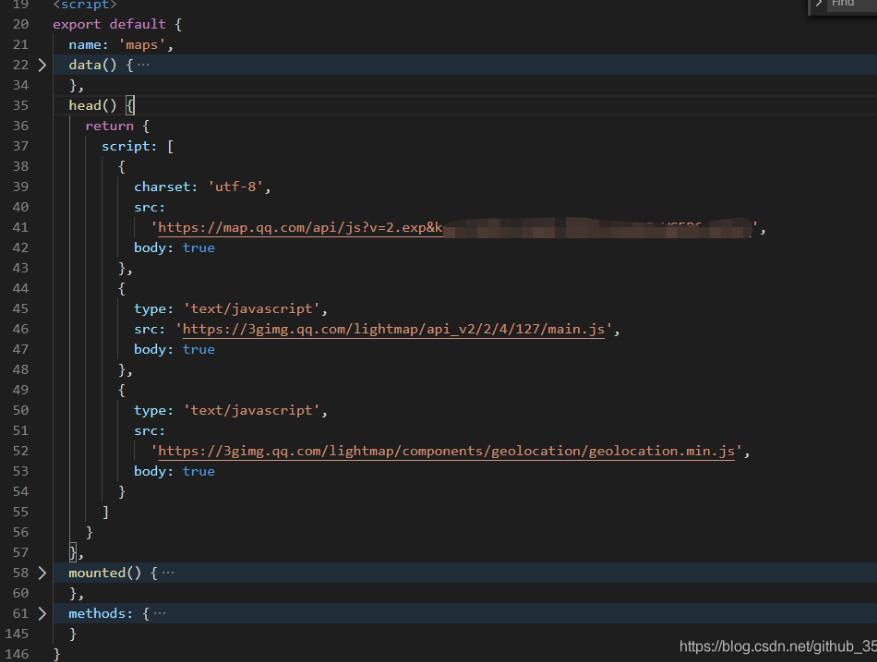这期内容当中小编将会给大家带来有关在nuxt中如何设置页面的head标签,文章内容丰富且以专业的角度为大家分析和叙述,阅读完这篇文章希望大家可以有所收获。
打开index.vue,编辑如下:
head(){
return {
title: 'jokes home page',
meta: [{
hid: "description",
name: "description",
content: "this is funny jokes home page"
},{
hid: 'viewport',
name: 'viewport',
content: 'width=device-width, initial-scale=1.0'
}]
}
},我们再次打开jokes.vue,编辑如下:
head(){
return {
title: 'jokes page',
meta: [{
hid: "description",
name: "description",
content: "funny jokes page"
}]
}
},打开about.vue,编辑如下:
head(){
return {
title: 'about page',
meta: [{
hid: "page description",
name: "description",
content: "funny jokes about page"
}]
}
},每次设置修改之后,我们都需要打开当前页面的源代码查看一下,服务端渲染新head标签内容是否生效。
补充知识:nuxt 为单独的页面或组件 注入js
代码如下
head() {
return {
script: [
{
charset: 'utf-8',
src:'https://map.qq.com/api/js?v=2.exp&key=3',
body: true
},
{
type: 'text/javascript',
src: 'https://3gimg.qq.com/lightmap/api_v2/2/4/127/main.js',
body: true
},
{
type: 'text/javascript',
src:'https://3gimg.qq.com/lightmap/components/geolocation/geolocation.min.js',
body: true
}
]
}
},由于地图 只有在一个页面使用, 没必要全局引入,于是就在单个页面使用

上述就是小编为大家分享的在nuxt中如何设置页面的head标签了,如果刚好有类似的疑惑,不妨参照上述分析进行理解。如果想知道更多相关知识,欢迎关注亿速云行业资讯频道。
亿速云「云服务器」,即开即用、新一代英特尔至强铂金CPU、三副本存储NVMe SSD云盘,价格低至29元/月。点击查看>>
免责声明:本站发布的内容(图片、视频和文字)以原创、转载和分享为主,文章观点不代表本网站立场,如果涉及侵权请联系站长邮箱:is@yisu.com进行举报,并提供相关证据,一经查实,将立刻删除涉嫌侵权内容。